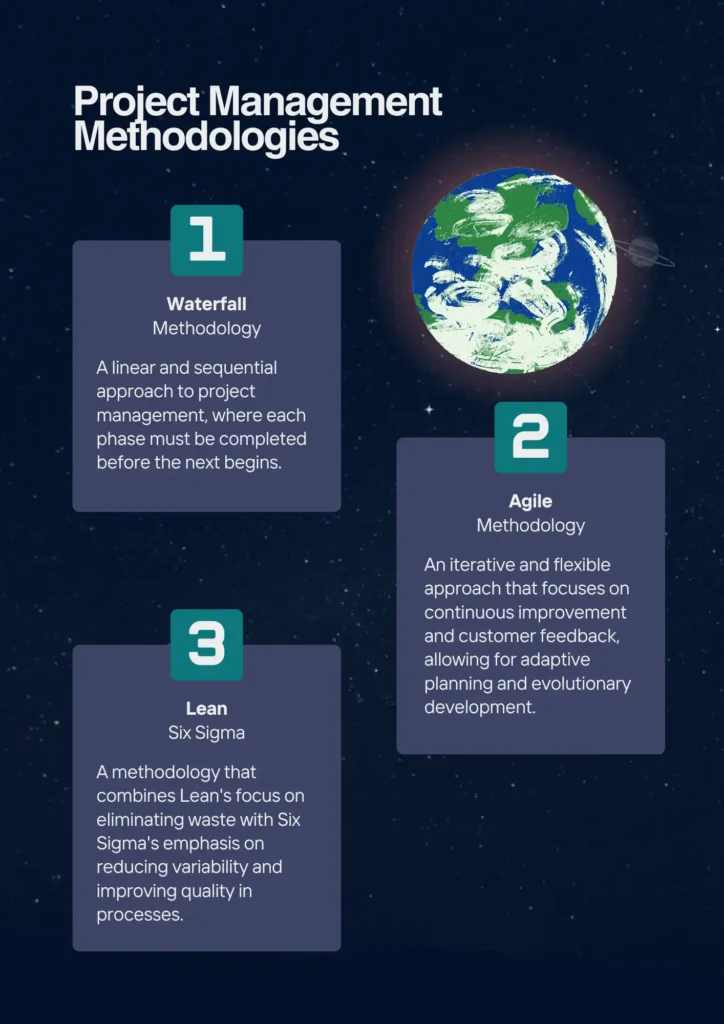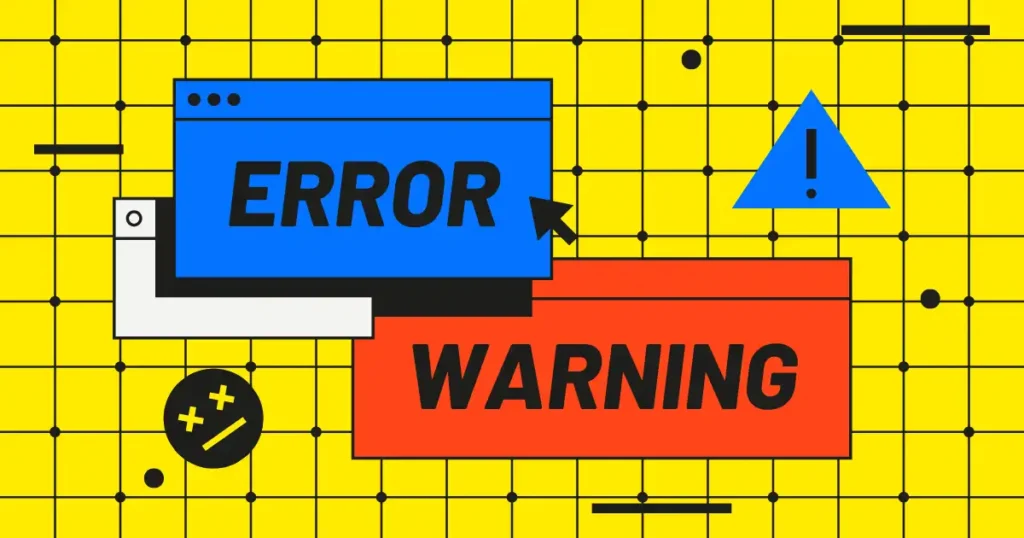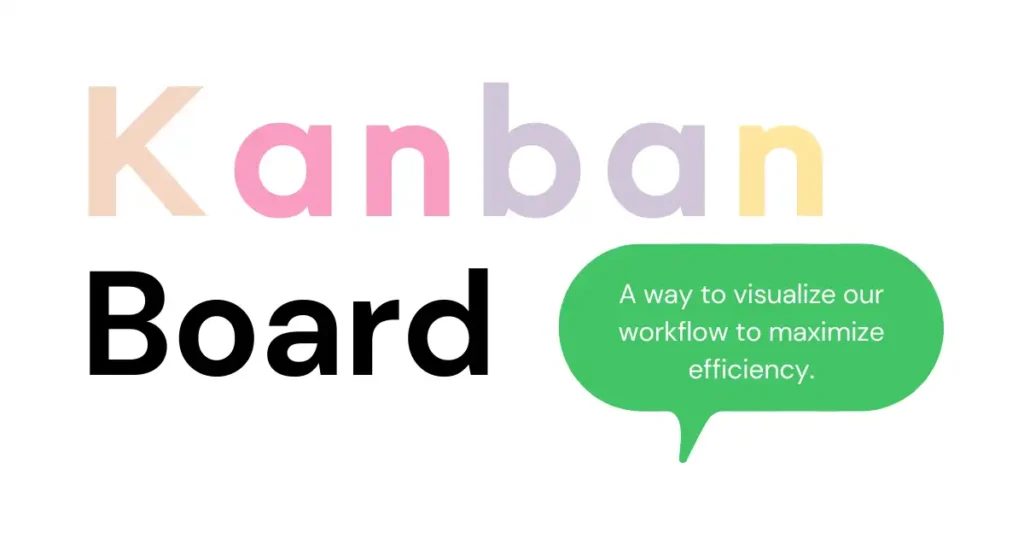Table of Contents
Introduction
What is Project Management?
Definition and scope of project management.
Project management is the art and science of planning, executing, and overseeing a project from start to finish. It involves coordinating resources, people, and tasks to achieve specific goals within a set timeframe and budget. Essentially, it’s about making sure that projects are completed efficiently and effectively, delivering the desired outcomes.
Importance of project management in various industries.
Project management is crucial across a wide range of industries. Whether it’s constructing a new building, launching a software application, or organizing a marketing campaign, having a skilled project manager can mean the difference between success and failure. They ensure that projects stay on track, meet deadlines, and adhere to budgets, ultimately leading to successful project outcomes.
Skills required to become a successful project manager.
To be a successful project manager, you need a mix of hard and soft skills. Some key skills include:
- Leadership and Communication: You need to lead your team effectively and communicate clearly with all stakeholders.
- Time Management: Ensuring that projects meet deadlines is crucial.
- Problem-Solving: Being able to quickly address and resolve issues that arise.
- Organizational Skills: Keeping track of all the moving parts of a project.
- Technical Skills: Depending on the industry, you might need specific technical know-how.
Why Consider a Career in Project Management?
Growth opportunities in project management.
Project management offers numerous growth opportunities. As businesses and organizations continue to evolve, the need for skilled project managers is on the rise. This demand opens up pathways for career advancement, allowing you to take on more significant projects and responsibilities over time.
Role in business success and operations.
Project managers play a pivotal role in the success and smooth operation of a business. They ensure that projects align with business goals, optimizing resources and helping drive strategic initiatives forward. Without effective project management, businesses can struggle to implement changes and achieve their objectives.
High demand across industries (IT, construction, healthcare, etc.).
One of the most appealing aspects of a career in project management is its versatility. Project managers are needed in virtually every industry, from IT and construction to healthcare and finance. This high demand means that skilled project managers can often find opportunities in a field that interests them, providing both job security and variety.
Step 1: Understanding the Role of a Project Manager

Key Responsibilities
Planning, executing, and closing projects.
As a project manager, your primary role is to plan, execute, and close projects. This means you’ll be responsible for outlining the project’s objectives, setting timelines, and ensuring that everything is completed on schedule. You’ll oversee the entire lifecycle of the project, from initiation to completion, making sure that all goals are met.
Managing teams, budgets, and timelines.
Managing a team is a big part of the job. You’ll need to assign tasks, monitor progress, and keep everyone motivated. In addition, you’ll be responsible for managing the project budget, ensuring that spending stays within approved limits. Keeping the project on track time-wise is also crucial, so effective timeline management is key.
Communicating with stakeholders and resolving issues.
Communication is essential in project management. You’ll need to regularly update stakeholders on the project’s progress, gather their feedback, and address any concerns they might have. When issues arise, it’s your job to resolve them promptly to keep the project moving forward without significant setbacks.
Ensuring project goals are met within scope, time, and cost constraints.
One of your critical tasks is to make sure that project goals are achieved within the defined scope, time, and cost constraints. This means carefully balancing resources and making adjustments as needed to avoid scope creep, delays, or budget overruns. It’s about delivering what was promised, when it was promised, and within the agreed budget.
Skills You Need to Develop
Leadership and team management.
To be an effective project manager, strong leadership and team management skills are essential. You need to inspire and guide your team, delegate tasks appropriately, and create a collaborative environment where everyone works towards common goals.
Communication, negotiation, and conflict resolution.
Clear and effective communication is a must. You’ll need to convey ideas and updates clearly, negotiate with vendors or stakeholders, and resolve conflicts that may arise within your team or with external parties. Good communication helps prevent misunderstandings and keeps the project on track.
Time management and multitasking.
Projects often involve juggling multiple tasks and deadlines simultaneously. Being able to manage your time efficiently and multitask is crucial. This means prioritizing tasks, setting realistic deadlines, and ensuring that your team stays on schedule.
Problem-solving and decision-making skills.
Challenges and unexpected issues are part and parcel of any project. Developing strong problem-solving and decision-making skills will help you address these challenges effectively. It’s about analyzing situations, considering possible solutions, and making informed decisions quickly to keep the project moving forward.
Step 2: Educational Background

Educational Requirements
Relevant degrees: Business, Engineering, IT, etc.
A solid educational background is crucial for aspiring project managers. While there isn’t a specific degree required, earning a degree in fields like Business, Engineering, Information Technology (IT), or a related area can provide a strong foundation. These degrees offer insights into various aspects of project management, including strategic planning, resource management, and technical skills, which are invaluable in this role.
Alternative paths: Work experience and self-study.
Not everyone follows the traditional educational route. Many successful project managers have climbed the ladder through work experience and self-study. Gaining hands-on experience in managing smaller projects or working under seasoned project managers can provide practical knowledge and skills. Additionally, many online resources and courses are available for self-study, helping you build the necessary competencies.
Project Management Certifications
Certifications can significantly enhance your credentials and demonstrate your commitment to the profession. Here are some key certifications:
Entry-Level Certifications
Certified Associate in Project Management (CAPM) by PMI.
The CAPM certification, offered by the Project Management Institute (PMI), is an excellent starting point for those new to project management. It covers fundamental project management principles and terminology, making it ideal for beginners.
PRINCE2 Foundation.
PRINCE2 (Projects IN Controlled Environments) is another popular certification. The Foundation level focuses on the basics of the PRINCE2 methodology, which is widely used in the UK and internationally.
Advanced Certifications
Project Management Professional (PMP) by PMI.
The PMP certification is one of the most recognized and respected certifications in the field. It demonstrates advanced knowledge and experience in project management and is suitable for those with several years of experience.
PRINCE2 Practitioner.
The PRINCE2 Practitioner certification builds on the Foundation level and focuses on applying the PRINCE2 methodology to real-world projects. It’s ideal for those seeking advanced skills in this specific methodology.
Agile Certifications (PMI-ACP, CSM).
With the rise of Agile methodologies, certifications like PMI-ACP (Agile Certified Practitioner) and CSM (Certified ScrumMaster) have become highly valuable. These certifications focus on Agile principles and practices, which are increasingly being adopted in various industries.
Lean Six Sigma (depending on industry).
Lean Six Sigma certifications are particularly beneficial in industries focused on process improvement and efficiency, such as manufacturing and healthcare. These certifications combine Lean principles with Six Sigma methodologies to enhance project outcomes.
Specialized Training
Industry-specific knowledge (construction, IT, etc.).
Depending on your industry, specialized training can be incredibly beneficial. For instance, if you’re in construction, courses related to construction management can provide industry-specific insights. Similarly, IT project managers might benefit from training in software development methodologies or cybersecurity.
Soft skills courses (leadership, communication).
Soft skills are equally important for project managers. Courses in leadership, communication, negotiation, and conflict resolution can help you manage your team more effectively and handle stakeholder interactions smoothly. These skills are critical for navigating the complexities of project management and ensuring successful project delivery.
Step 3: Gaining Work Experience

Internships and Entry-Level Positions
Roles like project assistant, coordinator, or team member.
Starting your career in project management often involves taking on entry-level roles such as project assistant, coordinator, or team member. These positions provide a solid foundation and help you understand the intricacies of project management. You’ll assist in planning, scheduling, and executing projects, which offers invaluable hands-on experience.
Importance of real-world exposure to project environments.
Real-world exposure is crucial for developing practical skills. Internships and entry-level positions allow you to see how projects are managed from start to finish. You’ll learn about the challenges project managers face and how they resolve issues, all while building a network of professional contacts.
On-the-Job Learning
Learning project management tools like Microsoft Project, Asana, Trello, etc.
Familiarizing yourself with project management tools is essential. Tools like Microsoft Project, Asana, and Trello are commonly used to plan, track, and manage projects. Each tool has its strengths, so learning how to effectively use them will make you more efficient and organized in your role.
Gaining familiarity with methodologies (Agile, Waterfall, Lean).
Understanding different project management methodologies is also important. Agile, Waterfall, and Lean are some of the most widely used approaches. Agile focuses on iterative progress and flexibility, Waterfall follows a linear and sequential approach, and Lean emphasizes efficiency and waste reduction. Gaining familiarity with these methodologies will allow you to choose the best approach for each project.
Volunteering for Projects
Non-profit or small business projects to build experience.
Volunteering for projects, especially with non-profits or small businesses, can be a great way to gain experience. These opportunities often allow you to take on significant responsibilities and manage projects from start to finish. Plus, volunteering can be a fulfilling way to give back to the community while honing your skills.
Taking initiative in current roles by managing small projects.
Even if you’re not in a project management role, you can still gain experience by taking initiative in your current job. Look for opportunities to manage small projects or tasks within your department. This could be anything from organizing an office event to leading a small team on a specific task. These experiences help you build your project management skills and demonstrate your capabilities to your employer.
Step 4: Learning Project Management Methodologies

Waterfall Methodology
Overview, pros, and cons.
The Waterfall methodology is one of the oldest and most traditional project management approaches. It follows a linear and sequential design, where each phase must be completed before moving on to the next.
- Pros: It’s straightforward and easy to understand, with clear milestones and deliverables. It’s ideal for projects with well-defined requirements and where changes are unlikely.
- Cons: It lacks flexibility, making it challenging to accommodate changes once a phase is completed. This can lead to issues if requirements evolve during the project.
Where and when to apply this traditional method.
The Waterfall methodology is best suited for projects with stable and clear requirements, such as construction projects, manufacturing, or any project where the end product is well understood and changes are minimal. It’s also useful in highly regulated industries where documentation and approval processes are stringent.
Agile Methodology
Introduction to Agile principles.
Agile methodology is a flexible and iterative approach focused on continuous improvement and customer satisfaction. Agile principles emphasize collaboration, adaptability, and delivering small, incremental improvements to the product.
Key frameworks: Scrum, Kanban.
- Scrum: Scrum is a popular Agile framework that divides the project into sprints, typically lasting two to four weeks. Each sprint delivers a potentially shippable product increment. Scrum involves roles like Scrum Master, Product Owner, and the Development Team.
- Kanban: Kanban focuses on visualizing the workflow and limiting work in progress to enhance efficiency. It uses a Kanban board with columns representing different stages of the process, helping teams manage and optimize the flow of tasks.
When Agile works best (e.g., IT, software development).
Agile is particularly effective in industries like IT and software development, where projects are complex, requirements can change frequently, and rapid delivery of products or features is essential. It’s also beneficial for projects where customer feedback and iterative development are critical.
Lean Six Sigma
Overview of Lean principles and Six Sigma processes.
Lean Six Sigma combines Lean principles, which focus on eliminating waste and optimizing processes, with Six Sigma methodologies, which aim to reduce defects and improve quality. Together, they create a powerful approach for enhancing efficiency and quality in projects.
- Lean Principles: Emphasize value creation for the customer, waste elimination, and continuous improvement.
- Six Sigma Processes: Focus on reducing variability and defects through a structured, data-driven approach, typically represented by the DMAIC (Define, Measure, Analyze, Improve, Control) cycle.
How Lean Six Sigma enhances efficiency and quality.
Lean Six Sigma improves efficiency by streamlining processes, eliminating non-value-added activities, and fostering a culture of continuous improvement. It enhances quality by using statistical analysis to identify and eliminate defects, ensuring that the final product meets or exceeds customer expectations. This methodology is particularly beneficial in manufacturing, healthcare, and other industries where process optimization and quality control are paramount.
Step 5: Building Leadership and Soft Skills

Developing Emotional Intelligence
Understanding team dynamics and motivating diverse teams.
Emotional intelligence (EI) is crucial for effective leadership. It involves being aware of your own emotions and those of others, and using this awareness to manage relationships judiciously and empathetically. Understanding team dynamics means recognizing the strengths, weaknesses, and motivations of your team members. By doing so, you can tailor your leadership approach to motivate and engage a diverse team, fostering a collaborative and productive work environment.
Conflict resolution and building positive work environments.
Conflict is inevitable in any team setting, but how you handle it can make a significant difference. Developing strong conflict resolution skills helps you address disputes calmly and constructively, ensuring that they don’t derail the project. Building a positive work environment where team members feel valued and heard can also minimize conflicts and enhance overall team morale and productivity.
Effective Communication
Mastering communication with stakeholders, clients, and teams.
Clear and effective communication is at the heart of project management. You need to master the art of conveying information, whether it’s updating stakeholders on project progress, discussing requirements with clients, or guiding your team. Effective communication involves active listening, articulating your thoughts clearly, and adapting your communication style to your audience.
Importance of clarity and transparency in communication.
Clarity and transparency are vital for avoiding misunderstandings and building trust. Always aim to be clear and precise in your communications. Transparency, particularly in sharing project progress and potential issues, helps establish trust with stakeholders and team members. When everyone is on the same page, it’s easier to collaborate and achieve project goals.
Time and Stress Management
Techniques to manage time effectively in projects.
Time management is a critical skill for project managers. Techniques like creating detailed schedules, setting clear priorities, and using tools like Gantt charts or task management software can help you manage your time effectively. Breaking down projects into smaller, manageable tasks and setting realistic deadlines also ensures that you can stay on track and meet project milestones.
Strategies for handling high-pressure environments.
Project management often involves high-pressure situations, especially when deadlines are tight or unexpected issues arise. Developing strategies to handle stress is essential. This might include practicing mindfulness or relaxation techniques, taking regular breaks, and maintaining a healthy work-life balance. Effective delegation and relying on your team can also reduce your stress levels by spreading the workload. Additionally, maintaining a positive attitude and being adaptable can help you navigate challenges more smoothly.
Step 6: Networking and Mentorship

Joining Professional Associations
Project Management Institute (PMI) and other organizations.
Joining professional associations like the Project Management Institute (PMI) can be incredibly beneficial for your career. PMI is one of the leading organizations for project management professionals, offering a wealth of resources, including certifications, training, and networking opportunities. Other organizations, such as the International Project Management Association (IPMA) and local project management groups, can also provide valuable support.
Benefits of attending conferences, webinars, and local chapter events.
Attending conferences, webinars, and local chapter events allows you to stay updated on industry trends, best practices, and innovations. These events offer opportunities to meet and learn from industry experts, exchange ideas with peers, and expand your professional network. They can also provide insights into new tools and methodologies that can enhance your project management skills.
Finding a Mentor
Importance of having a seasoned professional guide your career.
Having a mentor can significantly accelerate your career development. A seasoned professional can offer guidance, share their experiences, and provide valuable feedback. They can help you navigate challenges, set career goals, and develop the skills needed to advance in your field. A mentor can also introduce you to their network, opening doors to new opportunities.
How to find and approach a mentor in your industry.
Finding a mentor involves identifying someone whose career path and expertise align with your goals. Start by attending industry events, joining professional associations, and leveraging your existing network to connect with potential mentors. When approaching a potential mentor, be respectful of their time. Clearly explain why you’re seeking their guidance, what you hope to learn, and how you envision the mentorship relationship. Demonstrating your commitment and willingness to learn can make a positive impression.
Leveraging LinkedIn and Other Networks
Building a strong LinkedIn presence.
LinkedIn is a powerful tool for building and maintaining your professional network. Make sure your LinkedIn profile is complete and up-to-date, highlighting your skills, experience, and certifications. Share relevant content, such as articles or industry news, to demonstrate your expertise and engage with your connections. Endorse and recommend others, and seek endorsements and recommendations in return to build credibility.
Participating in online groups and discussions.
Participating in online groups and discussions can further expand your network and enhance your knowledge. Join LinkedIn groups related to project management and actively participate in discussions. Share your insights, ask questions, and provide support to others. Other platforms, such as industry-specific forums and social media groups, can also offer opportunities to connect with like-minded professionals and stay informed about the latest trends and best practices in project management.
Step 7: Advancing Your Career

Moving into Senior Roles
Transitioning from project coordinator to project manager.
As you gain experience and build your skills, you may find yourself ready to move from an entry-level position, such as a project coordinator, to a project manager role. To make this transition, focus on demonstrating your leadership abilities, mastering project management tools and methodologies, and successfully managing smaller projects. Taking on more responsibilities and showcasing your ability to deliver results can help you make the leap.
Steps to becoming a senior project manager or program manager.
Once you’ve established yourself as a project manager, the next step is to aim for senior roles like senior project manager or program manager. These positions require a deeper understanding of project management principles, a proven track record of successful projects, and strong leadership skills. Pursuing advanced certifications, continuing your education, and gaining experience in managing larger and more complex projects can pave the way for these higher-level roles. Additionally, demonstrating strategic thinking and the ability to align projects with organizational goals will make you a strong candidate for these positions.
Continuing Education
Staying updated with the latest trends in project management.
The field of project management is constantly evolving, with new tools, methodologies, and best practices emerging regularly. Staying updated with the latest trends is essential for maintaining your effectiveness and competitiveness. Regularly reading industry publications, attending webinars, and participating in professional development opportunities can help you stay current.
Advanced certifications and specialized training courses.
Continuing education through advanced certifications and specialized training courses can further enhance your skills and career prospects. Certifications such as the Portfolio Management Professional (PfMP), Program Management Professional (PgMP), and advanced Agile certifications can provide deeper insights and advanced skills. Additionally, specialized training in areas like risk management, change management, and specific industry practices can make you more versatile and valuable to employers.
Exploring New Industries
Adapting your project management skills to various sectors.
One of the great advantages of project management is its applicability across a wide range of industries. Your core project management skills—such as planning, executing, and closing projects—are transferable. However, each industry has its nuances, so being adaptable and willing to learn industry-specific knowledge is crucial.
Switching industries (e.g., IT to healthcare) and transferring skills.
Switching industries can open up new opportunities and challenges. For example, moving from IT to healthcare might require you to understand healthcare regulations, patient privacy concerns, and medical terminology. Start by researching the industry you’re interested in and identifying any gaps in your knowledge. Networking with professionals in the new industry, attending industry-specific training, and seeking mentorship can help you make a smooth transition. Highlighting your transferable skills, such as your ability to manage projects and lead teams, can demonstrate your value to potential employers in a new field.
Common Challenges and How to Overcome Them
Managing Stakeholder Expectations
Balancing competing demands and priorities.
One of the most significant challenges in project management is balancing the competing demands and priorities of different stakeholders. Each stakeholder may have their own vision for the project, leading to conflicting requirements and expectations. To manage this effectively, it’s essential to establish clear communication channels from the outset. Hold regular meetings to discuss progress, address concerns, and ensure everyone is on the same page. Prioritize tasks based on the project’s overall goals and impact, and be transparent about the decision-making process.
Tips for keeping stakeholders satisfied and engaged.
Keeping stakeholders satisfied and engaged involves proactive communication and relationship management. Here are some tips:
- Set Clear Expectations: Clearly define project goals, deliverables, and timelines right from the start.
- Regular Updates: Provide frequent updates on project progress, milestones achieved, and any potential issues.
- Involve Stakeholders: Encourage active participation and seek feedback regularly to make stakeholders feel involved.
- Manage Changes: Handle scope changes carefully, ensuring that any alterations are documented and agreed upon by all relevant parties.
- Be Transparent: Maintain transparency about challenges and setbacks, and discuss how you plan to address them.
Handling Project Failures
Learning from mistakes and setbacks.
Project failures, while challenging, offer valuable learning opportunities. When a project doesn’t go as planned, take the time to conduct a thorough analysis to understand what went wrong. Identify the key factors that contributed to the failure, whether they were related to planning, execution, communication, or unforeseen external influences. Use these insights to refine your processes, improve risk management strategies, and prevent similar issues in future projects. Emphasize a culture of continuous improvement within your team.
Case studies of failed projects and how they recovered.
Examining case studies of failed projects can provide practical lessons and strategies for recovery. Here are a couple of examples:
- Case Study 1: The Denver International Airport Baggage Handling System: This project faced significant delays and cost overruns due to overly ambitious technology and poor planning. After recognizing the failure, the team scaled back the system, simplified the design, and focused on achievable goals. The lesson here is the importance of realistic planning and incremental implementation.
- Case Study 2: The Challenger Space Shuttle Disaster: While this is an extreme example, it underscores the critical importance of communication and risk management. The disaster was partly due to ignored warnings about the O-rings’ performance in cold temperatures. Post-disaster, NASA implemented stricter safety protocols and improved communication channels. The key takeaway is to always heed risk warnings and ensure open communication.
In both cases, acknowledging the failure, understanding the root causes, and implementing corrective measures were crucial steps in overcoming the setbacks. Applying these lessons to your projects can enhance resilience and improve long-term success.
Tools for Project Managers
Popular Project Management Software
Overview of tools: Asana, Trello, Jira, Microsoft Project, etc.
A wide range of project management software is available to help streamline project planning, tracking, and execution. Here’s a brief overview of some popular tools:
- Asana: Asana is a versatile tool that allows you to create tasks, assign them to team members, and set deadlines. It’s great for tracking progress and ensuring that everyone is on the same page.
- Trello: Trello uses a card-based system to help you organize tasks. It’s particularly useful for visualizing the workflow and is highly flexible, making it suitable for various project types.
- Jira: Jira is a robust tool primarily used in software development. It supports Agile methodologies, including Scrum and Kanban, and helps manage backlogs, sprints, and releases.
- Microsoft Project: Microsoft Project is a comprehensive tool that offers advanced features for project planning, resource management, and scheduling. It’s ideal for complex projects that require detailed planning and tracking.
Benefits and features of each.
- Asana:
- Benefits: User-friendly interface, customizable workflows, integrations with other tools.
- Features: Task assignment, project timelines, progress tracking, team collaboration.
- Trello:
- Benefits: Easy to use, highly visual, flexible for various project types.
- Features: Boards, lists, cards, due dates, attachments, labels.
- Jira:
- Benefits: Designed for Agile projects, powerful for software development, extensive reporting.
- Features: Backlog management, sprint planning, issue tracking, customizable workflows.
- Microsoft Project:
- Benefits: Comprehensive project planning, resource allocation, advanced scheduling.
- Features: Gantt charts, resource management, project timelines, budget tracking.
Communication and Collaboration Tools
Slack, Zoom, Microsoft Teams, etc.
Effective communication and collaboration are vital for successful project management, especially with remote or distributed teams. Here are some popular tools:
- Slack: Slack is a messaging platform designed for team communication. It offers channels for different topics, direct messaging, and integrations with other tools.
- Zoom: Zoom is a video conferencing tool that facilitates virtual meetings, webinars, and collaboration. It’s known for its reliability and ease of use.
- Microsoft Teams: Microsoft Teams combines chat, video meetings, and file collaboration into one platform. It integrates seamlessly with other Microsoft Office tools.
Enhancing team collaboration and virtual project management.
- Slack:
- Benefits: Instant communication, organized channels, integrations with project management tools.
- Features: Messaging, file sharing, searchable history, app integrations.
- Zoom:
- Benefits: High-quality video and audio, easy scheduling, breakout rooms for smaller discussions.
- Features: Video conferencing, screen sharing, recording, virtual backgrounds.
- Microsoft Teams:
- Benefits: Unified communication platform, deep integration with Microsoft Office, collaboration on documents.
- Features: Chat, video meetings, file collaboration, channels, integration with Office 365.
Using these tools can significantly enhance team collaboration, streamline communication, and support virtual project management. They enable teams to stay connected, share information quickly, and work together effectively, regardless of their physical location.
Conclusion
Becoming a successful project manager involves mastering key responsibilities, acquiring relevant education and certifications, gaining practical experience, and continuously developing essential skills like leadership, communication, and time management. Embrace methodologies such as Waterfall, Agile, and Lean Six Sigma, and leverage tools like Asana, Trello, and Slack to enhance your efficiency. Networking, finding a mentor, and staying committed to continuous learning are crucial steps in advancing your career.
Embarking on this journey requires dedication and perseverance, but the rewards are immense. Start taking actionable steps today, stay committed to your growth, and embrace the challenges as opportunities to improve. By doing so, you’ll build a fulfilling career and make significant contributions to your projects and teams. Remember, every step you take brings you closer to becoming a proficient and successful project manager. Good luck!











